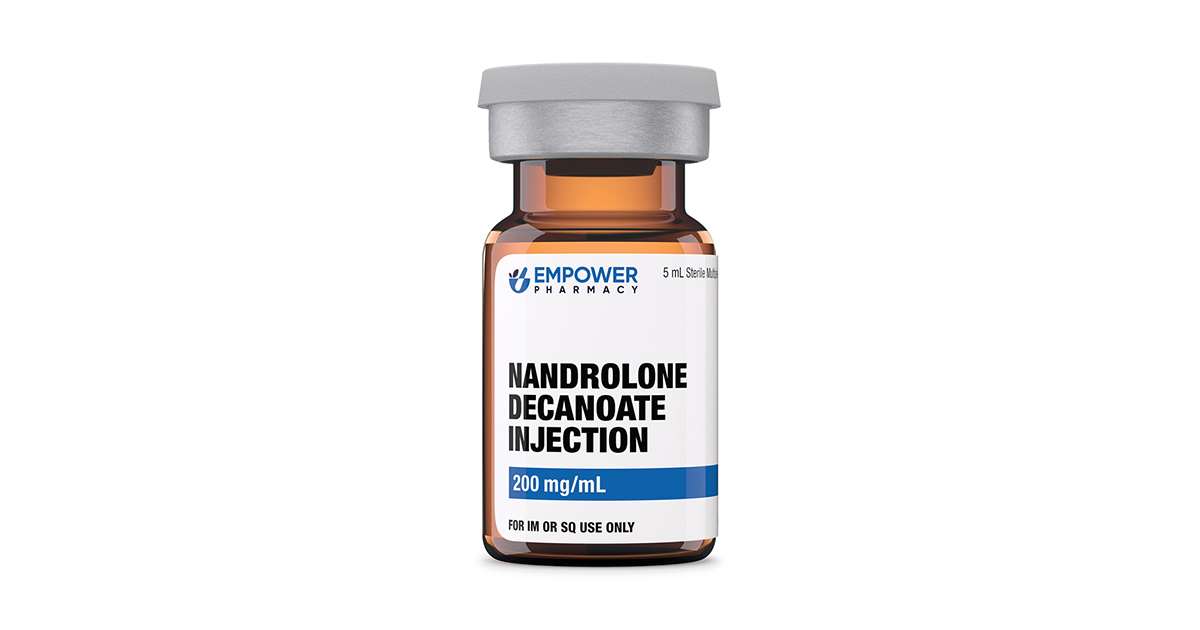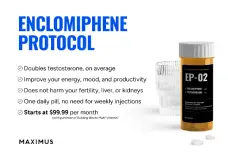Nandrolone (Deca Durabolin) Studies in Humans - Excel Male TRT Forum
A Randomized, Placebo-Controlled Trial of Nandrolone Decanoate in Human Immunodeficiency Virus-Infected Men with Mild to Moderate Weight Loss with Recombinant Human Growth Hormone as Active Reference Treatment . by Storer, Thomas W; Woodhouse, Linda J; Sattler, Fred; See more... The Journal...
From the book "Anabolics 2010"
Deca-Durabolin® (Nandrolone Decanoate)
Description
Nandrolone decanoate is an injectable form of the anabolic steroid nandrolone. The decanoate ester provides a slow release of nandrolone from the site of injection, lasting for up to three weeks.Nandrolone is very similar to testosterone in structure, although it lacks a carbon atom at the 19th position (hence its other name, 19-nortestosterone). Like testosterone, nandrolone exhibits relatively strong anabolic properties. Unlike testosterone, however, its tissue-building activity is accompanied by weak androgenic properties.
The mild properties of nandrolone decanoate have made it one of the most popular injectable steroids worldwide, highly favored by athletes for its ability to promote significant strength and lean muscle mass gains without strong androgenic or estrogenic side effects.
History
Nandrolone decanoate was first described in 1960 and became a prescription medication in 1962. It was developed by the international pharmaceutical giant Organon and sold under the brand name Deca-Durabolin.Early Uses
When first introduced to the United States, nandrolone decanoate was prescribed for various ailments, including:- Pre- and postoperative use for building lean mass
- Osteoporosis
- Advanced breast cancer
- Weight loss due to convalescence or disease
- Geriatric states (general weakness and frailty)
- Burns, severe trauma, and ulcers
- Adjunct therapy with certain forms of anemia
- Selective cases of growth and development retardation in children
Modern Medical Applications
Today, the approved medical uses for nandrolone decanoate are more refined. In the United States, it is only FDA-approved for treating anemia, though it is often used off-label to preserve lean mass in HIV-positive patients and others suffering from wasting diseases.Outside the U.S., Organon supports its use mainly for patients suffering from severe anemia, osteoporosis, and advanced breast cancer. The Organon Deca-Durabolin brand remains widely available today, now distributed by Merck/MSD.
How Supplied
Nandrolone decanoate is widely available in human and veterinary drug markets. Composition and dosage may vary by country and manufacturer, but it is usually available in 25 mg/ml, 50 mg/ml, 100 mg/ml, or 200 mg/ml of steroid dissolved in oil.Structural Characteristics
Nandrolone decanoate is a modified form of nandrolone, where a carboxylic acid ester (decanoic acid) has been attached to the 17-beta hydroxyl group. This esterification process:- Reduces the polarity of the steroid
- Slows absorption from the injection site
- Prolongs its therapeutic effect, allowing for less frequent injections
Pharmacokinetics
- Onset: A sharp spike in nandrolone release occurs 24-48 hours after deep intramuscular injection.
- Duration: Levels steadily decline, returning to near baseline two weeks later.
- Half-life: 7-12 days.
Side Effects
Estrogenic Side Effects
Nandrolone has a low tendency for estrogen conversion, estimated to be only about 20% of that seen with testosterone. This is because, while the liver can convert nandrolone to estradiol, adipose tissue (a primary site of aromatization) does not.Potential Side Effects
- Water retention
- Body fat gain
- Gynecomastia (at high doses)
Management
- Anti-estrogens: Clomiphene citrate or tamoxifen citrate may be necessary.
- Aromatase inhibitors: Arimidex® (anastrozole) can control estrogen more efficiently but is costly and may negatively affect blood lipids.
- Testosterone Combination: Using nandrolone with testosterone helps prevent gynecomastia.
Androgenic Side Effects
Although nandrolone is classified as an anabolic steroid, androgenic side effects can still occur, especially at higher doses.Potential Side Effects
- Oily skin and acne
- Body/facial hair growth
- Aggravation of male pattern baldness
- Virilization in women (deepening of voice, menstrual irregularities, clitoral enlargement)
Management
- Avoiding 5-alpha reductase inhibitors: Drugs like finasteride or dutasteride increase androgenic side effects with nandrolone.
- Testosterone Use: Nandrolone must always be used with testosterone to prevent erectile dysfunction and low libido.
Hepatotoxicity
Nandrolone is not c-17 alpha alkylated and is not known to have hepatotoxic effects in healthy individuals.Cardiovascular Side Effects
Anabolic steroids can negatively impact cholesterol levels, increasing the risk of atherosclerosis.Risk Factors
- Reduced HDL (good) cholesterol
- Increased LDL (bad) cholesterol
- Potential for high blood pressure
Prevention
- Maintain cardiovascular exercise
- Reduce saturated fats and simple carbohydrates
- Supplement with fish oils (4 grams per day) and cholesterol-supporting formulas
- Strict blood pressure control is recommended; ARBs like losartan can help
Testosterone Suppression
All anabolic steroids suppress natural testosterone production.- 100 mg/week for 6 weeks: 57% reduction in serum testosterone
- 300 mg/week: 70% reduction
Administration
Dosage for Men
- Medical Use: 50-100 mg every 3-4 weeks for 12 weeks
- Renal Anemia: 100-200 mg/week
- Performance Enhancement: 200-600 mg/week for 8-12 weeks
Dosage for Women
- Medical Use: 50-100 mg every 3-4 weeks
- Performance Enhancement: 50 mg/week for 4-6 weeks
- Virilization Risk: If symptoms occur, stop use immediately
Availability
Nandrolone decanoate has declined in prominence as a pharmaceutical product due to its limited medical applications.- Unavailable in the U.S. since 2007
- Still marketed in other countries
- Black market counterfeits are common
Compounded Versions
Nandrolone is currently available from compounding pharmacies like Empower Pharmacy.Sources:
- The End of Nandrolone (www.thebody.com)
- Nandrolone Decanoate Injection
Further Reading:
Beyond testosterone: The use of nandrolone in male health and wellness
Nandrolone, joint pain and tendon healing
Novel Uses for the Anabolic Steroids Nandrolone and Oxandrolone in the Management of Male Health
Does anyone use Nandrolone (Deca Durabolin) ?
What is Nandrolone effect when combined with TRT?
Anabolic/Androgenic Hormone Prescribing Indications - Testosterone Wisdom
Nandrolone may improve tendon healing: In-vitro data
Last edited:
















